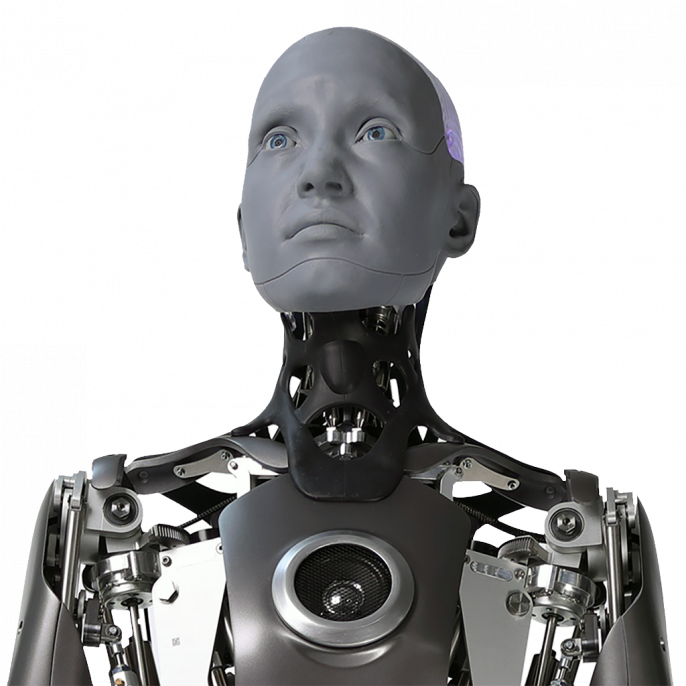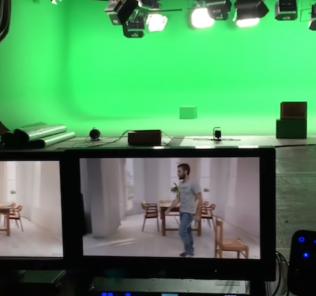Is this Robot the Future of Healthcare Simulation Manikin Technology?
What if a healthcare simulation manikin was so real, that clinical learners could not tell if they were speaking with a real human, or an animatronic robot? What if patient simulators could not only tell learners about their pain, but show their pain in real time? That future seems even more plausible after the launch of the Ameca Robot from Engineered Arts. With facial expressions which in our opinion cross the “uncanny valley”, Ameca represents a new kind of robot with the ability to recognize and respond to verbal and non-verbal human communication. This HealthySimulation.com article looks at innovative robots such as the Ameca and asks “is this the future of healthcare simulation manikin technology”?
Ameca is the world’s most advanced human shaped robot representing the forefront of human-robotics technology. Designed specifically as a platform for development into future robotics technologies, Ameca is the perfect humanoid robot platform for human-robot interaction. With the recent innovations in generative AI such as ChatGPT, the ability to communicate effectively in real time without the need for faculty oversight is quickly becoming reality. Companies like SimConverse and PCS are already demonstrating the potential for clinical skills communication practice through innovative AI, which is also seen in simulated patient manikin through the Alex simulator from Nasco Healthcare. Ameca is not limited to AI only responses however, and allows users to operate the robot’s responses in real time through the “Tinman remote” tool.
Sponsored Content:
Using 360 camera technology for facial demonstrations, the Engineered arts team has been able to most closely mimic human interactions directly from the source. Instead of trying to duplicate real human emotions through facial expressions, the 3d capture technology matched into the advanced facial animatronics and detailed silicone facial molding of Ameca provides for an extremely realistic portrayal. With face recognition, multiple voice recognition, binocular eye mounted cameras and microphones, Ameca can see and hear those in the environment. Currently the only patient simulators on the market which have significantly integrated facial or physical movement demonstrations are those from Gaumard Scientific, such as the Super Tory or the HAL.
Built for reliability on the Tritium 3 operating system, Engineered Arts suggests that Ameca is rugged enough to work outside the lab, albeit the robot is not currently designed for heavy clinical training use. While clinical skills training features (like intubation, chest compressions, IV insertion, etc) would still need to be integrated into the Ameca platform for the device to have potential as a medical simulator, the company provides users the opportunities to create custom animations through a 3D visualization tool, develop the robot directly through Python, and manage fleets of robots all at once from anywhere at any time. As such, the potential for the robot to meet clinical simulation needs more specifically could certainly be possible one day soon.
More About the Ameca Robot Engineered Arts
The first generation Ameca was released in early 2022 and instantly won the hearts and minds of the world, racking up tens of millions of views on social media. The second generation builds upon the successful platform by greatly increasing the fidelity of the face, giving unmatched expressive capabilities and superior lip synchronization. With intelligence built in, and a powerful cloud-centric software suite, Ameca is the perfect platform to develop advanced interactions and behaviors.
Sponsored Content:
Multiply the power of artificial Intelligence with an artificial body. Ameca is the physical presence that brings your code to life. The most advanced lifelike humanoid you can use to develop and show off your greatest machine learning interactions. This robot is the digital interface to the real world. Ameca is not just a development tool, it’s a cutting-edge integration of the latest technology that’s built to last. Grab attention and fuel the imagination with Ameca.
For a similar topic, view the HealthySimulation.com LEARN CE/CME Platform Webinar Leverage AI for Large Scale Healthcare Communication Skills Training!
Engineered Arts is the UK’s leading designer and manufacturer of humanoid entertainment robots. In 2005, Engineer Arts started building mechanical actors for the Mechanical Theatre at the Eden Project. Instead of creating an ad-hoc set of figures, they developed a programmable figure RoboThespian Mark 1 that could be used for any purpose. Ever since then, the UK-based company has been honing humanoid robots to have more realistic human movement and human interactivity. The company’s team also pushes the boundaries of robotics through their characters Mesmer, Quinn and custom commissions – keeping people spellbound across the globe.
Learn More About the Ameca Robot Here!
Other Animatronic Robots with Potential for Medical Simulation
Hong Kong-based Hanson Robotics is an AI and robotics company dedicated to creating socially intelligent machines that enrich the quality of human lives. The company’s most current robot is Sophia, which the company suggests “personifies a unique combination of science, engineering, and artistry”. Sophia is simultaneously a human-crafted science fiction character depicting the future of AI and robotics, and a platform for advanced robotics and AI research. She has been used for research as part of the Loving AI project, which seeks to understand how robots can adapt to users’ needs through intra and interpersonal development. Hanson Robotics also launched the Grace Nursing Robot during COVID designed to interact with the elderly or those isolated from the pandemic. Grace utilized cameras to measure temperatures and patient responsiveness, as well as AI to help diagnose a patient.
Dental Simulator Pedia_Roid represents a 6-year old dental patient who accurately mimics the typical reactions and behaviors of a nervous child patient receiving a dental treatment. Pedia_Roid can display various facial expressions and body movements such as squirming expresses a child’s nervousness and anxiety, create unexpected movement of the head, tongue, arms and legs to simulate a child’s resistance to being treated, and screams and cries in protest. Built by Japanese-based Nissin Dental Products, Pedia_Roid is designed to improve dental education globally as part of a complete line of high-standard dental training models and simulation systems.
Other similar animatronic robots in the space include the Erica android designed as a research platform to study human-robot interaction, and the Robo-C2 humanoid robot which can mimic a human.
Lance Baily, BA, EMT-B, is the Founder / CEO of HealthySimulation.com, which he started in 2010 while serving as the Director of the Nevada System of Higher Education’s Clinical Simulation Center of Las Vegas. Lance also founded SimGHOSTS.org, the world’s only non-profit organization dedicated to supporting professionals operating healthcare simulation technologies. His co-edited Book: “Comprehensive Healthcare Simulation: Operations, Technology, and Innovative Practice” is cited as a key source for professional certification in the industry. Lance’s background also includes serving as a Simulation Technology Specialist for the LA Community College District, EMS fire fighting, Hollywood movie production, rescue diving, and global travel. He and his wife live with their two brilliant daughters and one crazy dachshund in Las Vegas, Nevada.
Sponsored Content:

















